SEARCH






|
|
|
|


Today we are publishing the second part of Hans-Martin Doelz's most interesting interview. For those who missed the first part you can read it here
When looking to Hans-Martin's strong work, one sees immediately that he is an accomplished artist and strong personality in the world of contemporary photography. He began to create art after retiring from his job. Initially he took photographs and changed their appearance through heavy alienation into mainly abstract images. He also tried to create images without any camera, only using computer algorithms like “processing”.
Since 2013 however, he focuses more on photography without alteration. Most of his images are inspired by lines, patterns and shapes that are found in the man-made and natural environment.
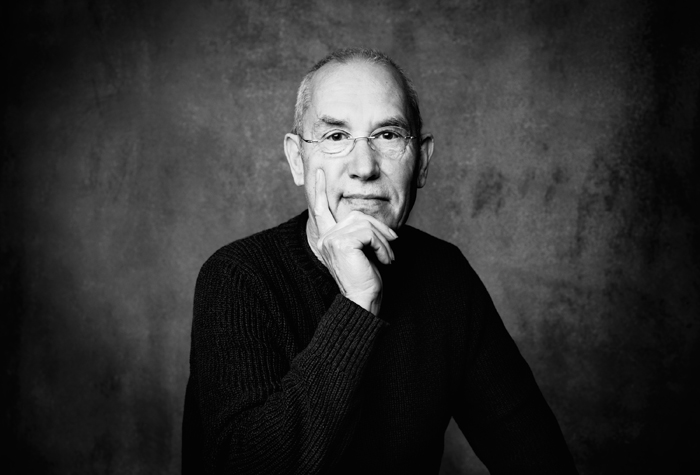 Hans Martin Doelz by @ Jim Rakete
Hans Martin Doelz by @ Jim Rakete
Do you think it´s possible to give some advices to someone in art? If so, what skills do you advice anyone to develop for shooting abstract and architecture?
To give advice to someone in creating art is not that easy. Everybody has to decide personally how to express him- or herself through art. As I mentioned above, it can make sense to develop ones own style which can be recognized by other people. Otherwise it's very difficult to cause attention.
Nevertheless it’s worth to deal intensively with the works of other artists, not with the target to copy anything but to learn in detail how the works were created, from the idea until the final work. In this regard the 1X-tutorials are always inspiring.
Do you have a favorite building to shoot? No, I don't have any particular favorite building so far. There are many locations with attractive buildings that I know from photos by other photographers, but I have not been there until now. Possibly I will visit some of these locations in the future. If so, I'm primarily interested to see other libraries.
Which places/buildings have been your favorite spots to shoot and why?
Of course the Stuttgart Library. Mainly because this library is located only about 10 miles from my home. This heavily discussed project by the Yi-architects which was realized in 2011, found my interest. Most people complained about the sterile atmosphere, inside and outside the library. Although there are millions of photos from that location in existence, I tried to develop my own idea. The output was my little series „architecture and people“.
What are you working/doing, right now, in photography? Are there projects and any plans ongoing? And for the future - do you have any future plans to develop your two main photography categories even more?
As mentioned above, a project that I recently finished has been “architecture and people“. It consists of eight photographs captured in the Stuttgart Library. I published it in my Lens Culture portfolio account where it was highly appreciated by the editors. Lens Culture honored my work with a life time free invite-only photo-portfolio account which made me very proud.
With the photos I wanted to convey the atmosphere inside the library to the viewer, an atmosphere which is so much different from the atmosphere in the famous old fashioned libraries that one either knows from personal visits or from the many photographs of these locations (e.g. by Candida Höfer). While Candida Höfer on most of her architectural images excludes the presence of people (like her teacher Bernd Becher and his wife Hilla did, too) I preferred to include very few people and their interactions with the building.
Right now, I’m working on my project “visual perception“. As a photographer, I’m always interested in the process of perception of our environment. That applies to the “real world“ and to the “frozen moments of reality“ shown on a photograph as well. Visual perception is a highly complex process. It’s interesting that about one quarter of the human brain is involved in visual processing.
To become not too theoretical, only a few sentences written by experts in these fields about the process in detail: ”Perception can be split into two processes. Firstly processing sensory input which transforms these low-level information to higher-level information (e.g., extracts shapes for object recognition). Secondly processing which is connected with person's concept and expectations (knowledge), and selective mechanisms (attention) that influence perception.“ Reference for quote is from: Bernstein, Douglas A. (5 March 2010). Essentials of Psychology. Cengage Learning. pp.123–124
In this context I have asked me the question about the next step that happens after the first perception processes have been finished. The subjective impression of what has been seen. Only one of many examples: beauty and ugliness. Symmetry is perceived by many people as beauty, but perfect symmetry is perceived less beautiful than slightly broken symmetry. A human face’s symmetry is always more or less slightly broken. Some time ago I got a mail from a photo-magazine publisher with several attached free stock photos. One of them was a photo that showed a very attractive face of a young lady. I made an experiment and cut the image in two parts, vertically exactly through the middle of the face. And then I created two different faces, one containing the left halves (by duplicating the left half, vertical mirroring and adding this to the left half). The same I did with the right half. The result were two completely different faces compared to the real face. Interesting that the face of the left halves looked nearly as beautiful as the real face but more interesting and somehow surprising was that the face with the right halves looked like the face of a male person.
Having said this, you have to be aware that many of our activities related to visual information proceed unconsciously. Especially when we see things that we seem to know we don’t pay as much attention as if we see something that we have never seen before or at least very seldom. This behavior does not only apply to people when watching the “real world“ but also when they are looking at images. The message for the photographer in this regard is: If you want to gain attention for your images you have to be able to include some information in your image that is somehow new or at least unusual to the viewer. This might be a special light, a special color, a special mixture of colors, a special composition only to name a few issues. If the image lacks something special, then there will be a high risk of it to be boring to the viewer. Especially nowadays where images are uploaded tsunami-like to the internet it’s not easy for a photograph to gain attention by anybody. The best practice to gain experience in judging the quality of images with respect to their potential of gaining attention is the daily view of many photographs, preferably preselected ones (e.g. in online-magazines that are presented via Facebook or similar platforms). And you can gain experience when you curate the images submitted to 1X. There you can see a wide range of quality, you can see the photos that will be rejected by the curators and you can see the photos that will be published in the gallery. You’ll find out very quickly that there is a certain difference between the average quality of the rejected images and the average quality of the published ones.
This all in mind, to come back to the theme of my present and my future projects, these projects will also depend on the possibility of gaining attention by the public.
The project “visual perception“ includes images with some unusual (due to alteration) elements, e.g. color, shapes, composition, reduction / abstraction or other interesting things. I don’t want to include too many images in this project, only a few of each category to show the influence of these “slight alienation of reality“ to the viewer of the images.
When I succeed in showing the viewer who’s looking at my images, how he perceives something and why he perceives it in that special way, then my goal is achieved and I’m satisfied.
Nowadays there are two main “waves” in photography: the technological race with camera brands offering us more and more pixel count, resolution, and outstanding digital features; and another opposite one that goes “back to the basics” with film (more and more shooting in 35mm, medium and large format), lomo, pinhole, blur and so on. How do you watch this scenario and how does this affect your photographic work?
I think there is something from both combined in my photographic activity.
Honestly, I was never deeply interested in the technical issues of photography, the most important to me is the outcome, the photograph itself. Nevertheless the quality of the camera plays an important role to reach a certain technical quality of the photograph. Since nowadays most photos are viewed either on a monitor or on relatively small prints, I’m always deeply impressed when viewing large format size photographs. Who ever saw one of Andreas Gursky’s photos with fascinating details, will know what I mean. Andreas Gursky, however, sometimes works with large format cameras (5x7) which allow prints of these impressive size one can see in museums.
When I started / (continued after a long break) with photography I used a compact camera, a Christmas gift from my wife. By the way, this was my first digital camera. To achieve results that allowed prints of a size of 30x20 cm was really no problem. But it was not possible to reach an acceptable quality to produce prints of 150x100 cm.
For that reason I decided to buy a new camera with a bigger sensor and lenses with a better quality. I think this is sufficient to reach my goals concerning quality at this time.
The “back-to-the-basics“-theme does not play a significant role for me, however, my camera has only a viewfinder and lacks a display on the back where you can see the frame of the picture you want to capture.
What I could imagine in the future is to buy (or to rent for a short time) a medium format camera, to gain experience with these cameras.
Do you have an architecture picture of yours that you particularly like? The same for abstract?
I like many of my shots of the Stuttgart Library, especially the ones with the frontal view on the bookshelves with the colored book spines.
From my abstract images, I like most the black and white ones with the significantly reduced visual information of the running track in a stadium.
I also like the photo that I made with a moving camera and I like the stripes-images that I created some years ago at the same time as Gerhard Richter did. Regrettably these stripes-images present their total beauty only in large format (at least 80 cm, better 400x200 cm). On a „normal sized“ monitor or on a small print you can’t see the fine details of the many different stripes-colors, it’s more or less an unattractive hotchpotch of colors.
Nevertheless I uploaded one of these images to my 1X-portfolio. There you will find (in the image-info), if interested, the making of this image.
Do you have an architecture picture of someone else that you particular like? The same for abstract.
From the many excellent architecture images you can see on 1X, one of my favorites is „bricks“ by Harry Lieber. In the abstract field from the many stunning images by Ursula Abresch I would like to mention “World’s Far Away 1“ and “Slocan Lake at Sunset 3“.
Outside 1X I like Andreas Gursky’s “Ohne Titel XV, 2008“ which is architectural and abstract at the same time. “Ohne Titel XVI, 2008“ is a similar one and is very pleasing as well. One of my favorites in the abstract field is Gerhard Richter’s “Wald", 2005, WV Nr. 892-4. However, this is a painting, not photography.
Do you have some reference photographers that inspired you and that you want to mention in this interview?
The more I’m concerned with photographic topics the more the number of photographers from whom I get some inspiration is increasing. A few years ago, photography and their photographers were more or less an empty field to me. I did not know very much about it at all. The same applies to art in general. But since I began to deal intensively with art and photography this changed rapidly, however, I’m still a beginner. To mention a few names: As already said, Andreas Gursky, Candida Höfer produced many very impressive images.
Apart from the genres architecture and abstract, I like the images of 1X-photographers Adrian Donoghue and Ben Goossens. They represent to me the genres creative edit and are very skilled in creating pleasing images.
Outside 1X I would like to mention the staged, rather cinematic photography of Gregory Crewdson (Series “Beneath the Roses“, 2003-2008) with wonderful light effects. The young, 35 year old Ryan Schude has already realized and published a lot of wonderful staged photos as well. Although these photographers represent other genres in which I’m involved in they influence my work concerning dealing with the basic issues of photography, the handling of light, the seeing of scenes, the composition of images.
Last but not least I would like to mention some photographers who created (beside others) a lot of admirable portrait photographs. Albert Watson who created one of my most admired photos, the great portrait of Mick Jagger. Jim Rakete who created a lot of impressive portraits in the last decades and Peter Lindbergh whose portrait photographs belong to the best that were ever created.
Can you tell us briefly how 1X is important to showcase your work?
At the time when I discovered 1X I was searching for a photo community that should meet the following expectations: To showcase some of my images, gaining valuable feedback and a strictly limited daily publishing of outstanding images. In addition a comfortable search function to find pleasing images to get some inspiration for my own photographic activity.
I tried to find a suitable community in Germany, but what I found there did not meet my expectations. In most cases feedback was not valuable but „buddy-affected“, that was not what I wanted. Furthermore the quantity and quality of uploaded and displayed images was partly horrible.
So I extended my search outside of Germany. I was lucky to find some of which I think 1X is the best one due to the idea of curating the uploads and only publish the best (whatever the best will mean).
About two years ago I had my first image published by the curators of 1X which made me very proud. A friend sent me a congratulation and said, an 1X-publish would be the accolade for a photographer, which made me even more proud.
Meanwhile I’m still on my way to develop ideas and to improve my skills. With the help of 1X.
Last but not least, I’m happy that you did not ask me the probably most popular question to photographers: „What makes a photo a good photo ?“ I have asked myself this question very often and I found an answer that is very simple: „The field of photography is so complex that an answer to this question depends to a great extent on the purpose for which the photo was taken. There is no single answer with general validity to this question.“
Let me conclude with expressing my gratitude for letting me share my thoughts through this interview, I’m happy about this great appreciation of my photographic work so far.
 | Write |
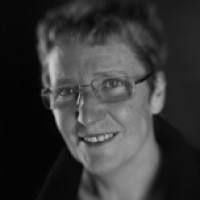 | Hilde Ghesquiere Great interview. Very interesting thoughts and information. Congrats!! |
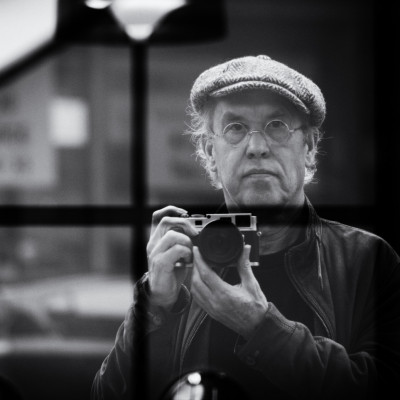 | Hans Martin Doelz CREW Thank you so much, Hilde, for your feedback ! |
 | Edith Hoffman Great continuation of the interview. Thanks to all who were involved and for sharing. Another person who created people like you explained above is Ruud van Empel, none of them exists in real life, since he mixes mouths/eyes/nose etc. If you love the work of Andreas Gursky, you might be interested in the work of Edward Burtynsky too. Have a lovely Sunday and take care :-) |
 | Hans Martin Doelz CREW Many thanks, Edith, for your comment and giving the info about Ruud van Empel and Edward Burtynsky. I'll have a look at their work. |
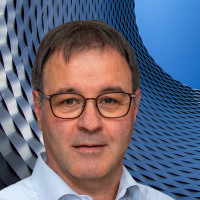 | Harry Lieber PRO Great interview with very interesting thoughts and information. Glad to hear you like my photo bricks, Hans Martin. Looking forward to your upcoming work.
Harry |
 | Hans Martin Doelz CREW Thank you, Harry. Your "bricks" is indeed an outstanding image. There are a lot of other outstanding architecture images by various 1X-photographers. But I could not mention them all. |
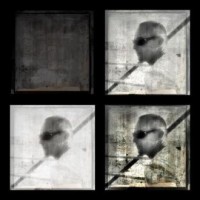 | Paulo Abrantes PRO it was my pleasure, Hans-Martin, and I really thank you for this conversation and for the time you gave to us sharing your thoughts. |
 | Hans Martin Doelz CREW I was a pleasure for me, too, Paulo. Thanks once again ! |
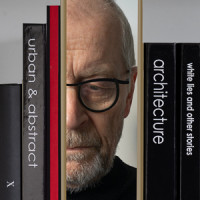 | Luc Vangindertael (laGrange) CREW I have read this interview with one of our eminent members with great interest. The part on visual perception is an eye opener for every photographer. Thank you for sharing this Hans-Martin, thank you all 1X crew fir conducting the interview. |
 | Hans Martin Doelz CREW Hi Luc, many thanks for your comment. Yes, the field of visual perception is a very interesting one. |
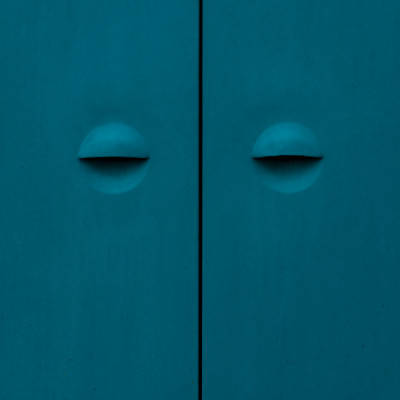 | minimalist Thank you very much Paulo and Yvette for this brilliant and very informative interview.
And - of course - a big 'Thank You' to Hans Martin for this inspiring view into his photographical work.
Kind regards, Stefan |
 | Hans Martin Doelz CREW Thanks a lot, Stefan. Glad you enjoyed reading. |
 | Hans Martin Doelz CREW Many thanks to all who were involved in that interview, it was a pleasure for me to answer the questions of the well prepared themes by Paulo. Big thanks to Hans Spiegel who did a great job proof-reading my draft and for adding the link to "Essentials of Psychology", pp 123-124. And big thanks to Yvette for writing those kind and appreciative words in the introduction.
Last of all, I would like to express my gratitude to all who share their passion for ambitious photography in the 1X-community, everyone in his own way.
|